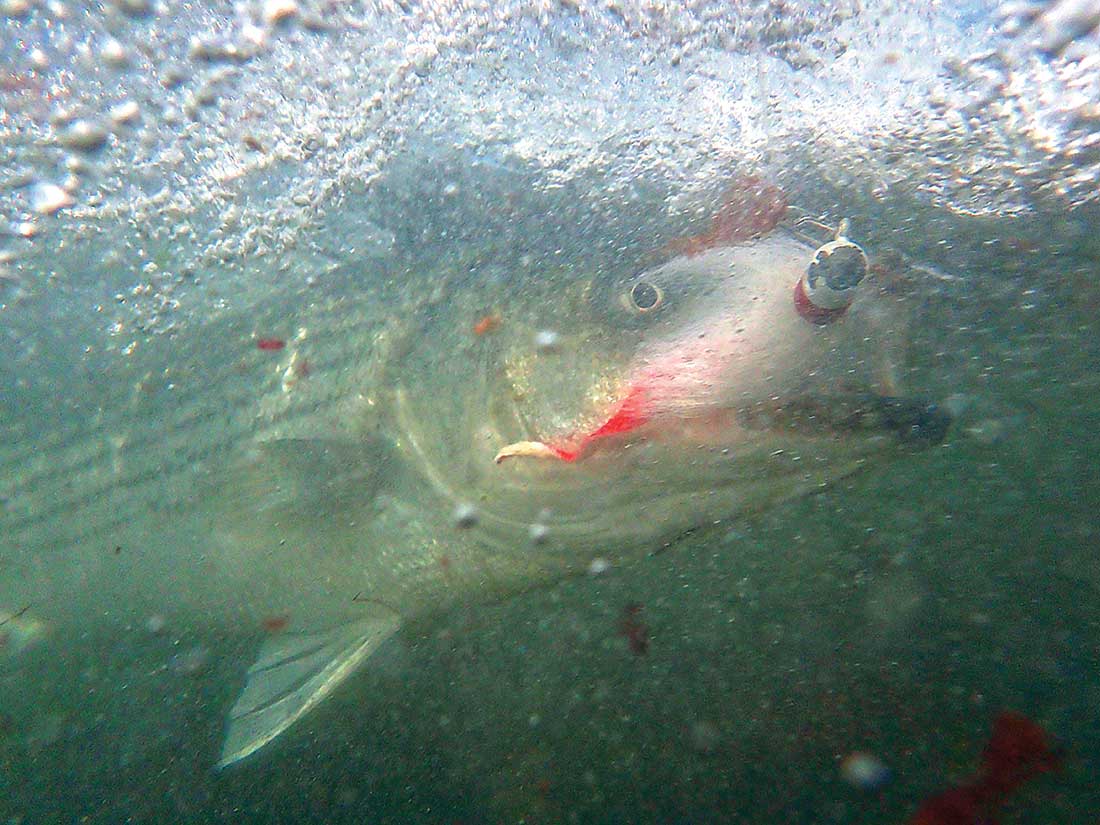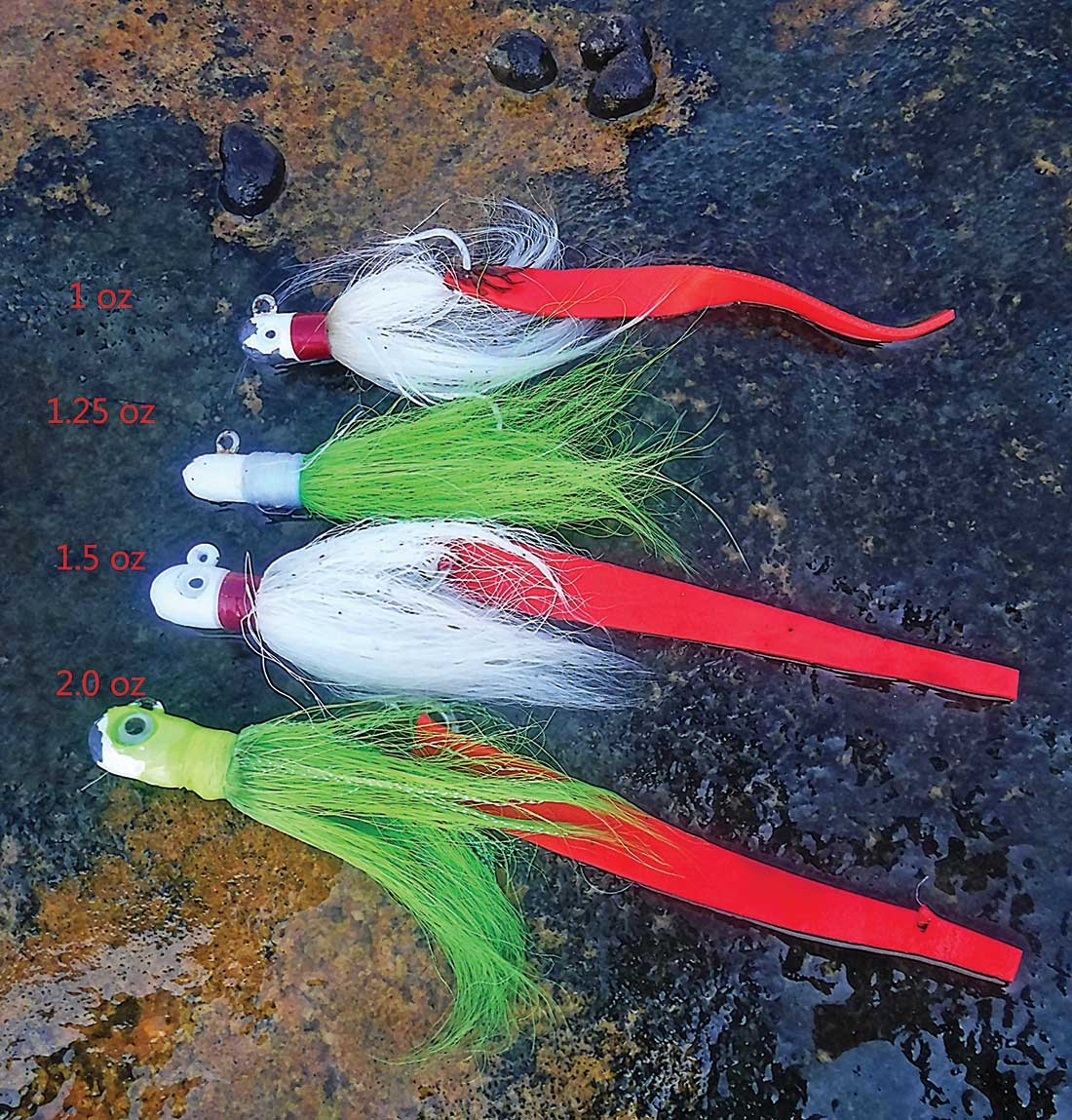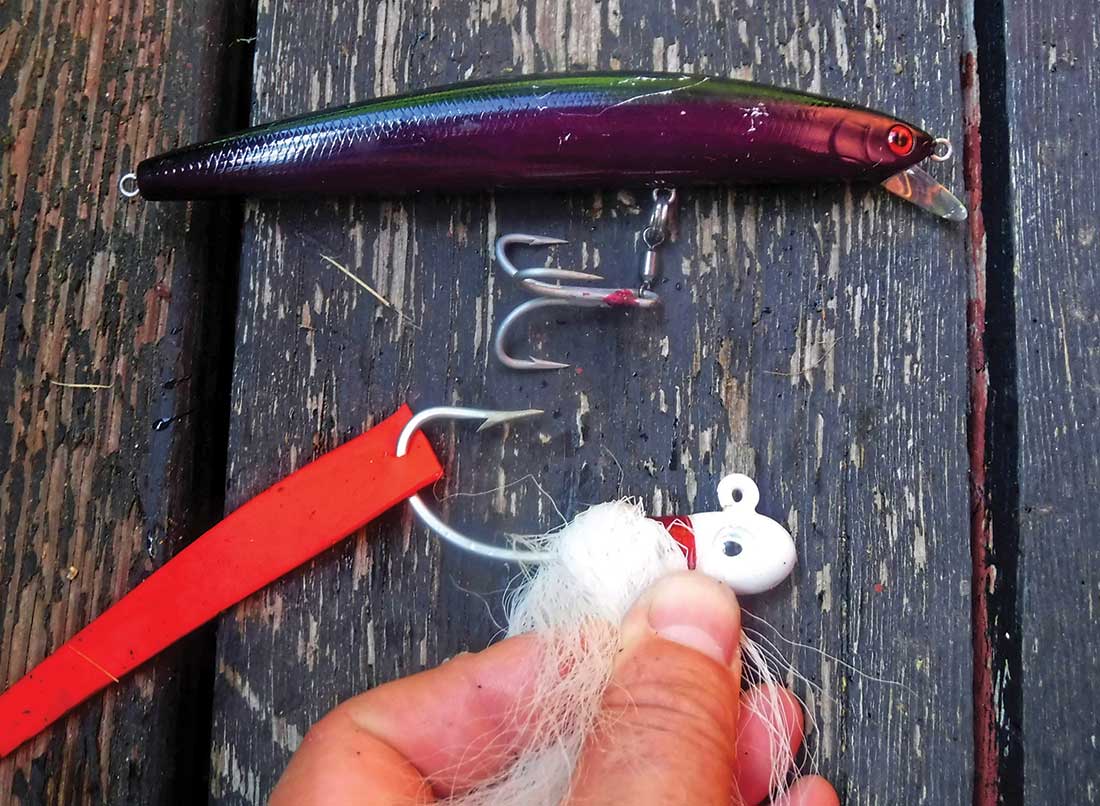
Considered a staple at the so-called ‘Surfcasting Capital of the World’, outside of Montauk surfcasters have been slow to adopt the simple bucktail for open-surf use.
Bucktails are hands-down the most effective fish catching form I carry as they allow me to present to fish in ways that other methods simply cannot. My intent in authoring this article is to explain why I lean on bucktails so much and hope that some of the details will motivate you to fish them more often this season.
It always surprises me to find seasoned anglers who do not bucktail, or only occasionally will throw them. Bucktails really shine in rough, white water, but their effectiveness is not limited to rough water and can be equally effective in calmer conditions.
Most plugs float and are made for shallow presentations in moderate surf. Bucktails stand in a class of their own as they can fish well in those conditions but also probe the deepest of water in the heaviest current. Investing in the skill makes an angler extremely versatile and efficient.
Learning to Bucktail
First and foremost; if you don’t own a copy, buy John Skinners book ‘Fishing the Bucktail’, or borrow it from the library. It is the only surfcasting book that has ever radically changed my fishing. He covers all the how-to part of learning.
As with any new technique, try to target fish that are already biting. Like, if you are on fish using a confidence method, switch to bucktails to work out the mechanics of presentation. Often fish that will take one form will also take a bucktail. Further, you may find your hook-up-to-landing rate actually improves with bucktails.
Bucktailing has a regional concentration with the epicenter being Long Island. During my early formative years as a surfcaster, I visited Montauk and was influenced and inspired by the casters on those Montauk beaches. There are bites where, if you were not throwing bucktails, you were not catching. But it’s not just Montauk where the bucktail shines in the surf!
Making a Case
Most forage in the surf is pretty small, and for this reason the profile of the bucktail is a nice match. There are times when big baits are around and bass will only take larger plugs, and even the small bass will not touch a bucktail-sized offering, but this is rare. There is also a consensus that big fish will only take large plugs, but this is not always true. The migrations are periods when bass are real eating machines. Mostly bass are not picky, you only need to present any offering in front of them.
I have heard anglers question my choice of bucktails on rocky beaches.

If the bucktails you carry are too heavy for conditions, then yes, you have done little more than cast a sinker into the rocks. The wonderful thing about bucktails is that they come in a range of weights and configurations, each with attributes appropriate from any water. In general I carry 1-, 1.25-, 1.5- and 2-ounce bucktails and this range covers almost all normal scenarios.
Can you think of any other lure with so many weight options? Most lures at best offer two weight variances. With plugs, you have to jump between brands to get different presentation depths. Having a variety of working depths will allow one to tune the offering to changing conditions over a tide.
The trick to successful bucktailing is to pick a weight that the water can suspend and give loft to. A general suggestion is to present at the slowest possible speed to keep in the strike zone, which is often a foot or two off bottom. Consider a kite without wind; it will just lay on the ground, but even on a windless day we can give a kite loft in the air if one were to pull it through the air or run with it. Picking a bucktail is like picking a kite that just barely overcomes the threshold of gravity for the conditions; not too light to fly high, but just heavy enough to stay low based on water movement and desired retrieve speed.
Get Hooked, Stay Hooked
We all consider single-hooked offerings better for the fish and safer for us. Adding to that, my conversion ratios are much higher and releases much quicker. For those reasons, even if I am catching a lot of bass on darters or needles, I investigate if the pickup ratio continues or improves with a bucktail. If it does, the bucktails stay on. It is the one method I am confident unhooking blindfolded.
Consider the gape difference between the hooks on something like an SP Minnow and a bucktail; the smaller gape is the SP Minnow. Does the SP Minnow catch? Absolutely! Are there bites that a bucktail can work as well if not better? Absolutely! The thing about trebles is that they have a greater probability of snagging a fish on the outside of the mouth. In all my time fishing a bucktail I have never had one foul hooked fish. Most of the hooksets are mouth corner, the rest, lip or inner mouth.

Even soft plastics cannot compete as the bucktail profile is mostly air and is easily pulled away to expose the hook, where the soft plastic cannot compress to expose the hook to its shank. This gape is an important attribute of a bucktail and its effectiveness. Soft plastics have their place, but for me do not offer enough durability. These are little reasons I reach for a bucktail over a plastic.
The takeaway here is: A big hook = fish not getting away.
Compared to other offerings, the hook to profile ratio is pretty significant. The bucktail is the hook, so if the fish strikes the bucktail, it is always striking the hook. There is a higher probability of effectively hooking and landing the fish. Now compare that to a needlefish. There is a higher probability of no hookup or foul hookup because most of that form is void of hook. There are more things that can go wrong when a fish hits a plug like this. The attack angle, the location of the hook, the size of the hook, and the size of the fish can all lead to dropped fish. Sometimes a plug’s hook position may not be optimal for a specific bite. Side-by-side fishing with other anglers using plugs vs bucktails, I always feel that my hookup-to-landing ratio is better. It is not that I am a better angler, I am just using a better tool.
This may sound funny, but a bucktail is little more than a retrievable gaff that the fish think looks like forage. What better form to fish with? A BIG meat hook.
When I am on a rock I often grab the lead head to lift the fish to unhook it, just like one would a gaff. I do this with both large and small fish until I can lip them to control them. If you control the fish this way it really minimizes the chance that you may get stuck by your own hook. With lifting big fish, this technique is a must, unless you want to test your knots and leaders with 20 to 40 pounds of weight.
This is not all to say bucktails work everywhere in every condition. They cannot be drifted out easily in current like a floating lure. They cannot be easily presented in really shallow water that is calm and 1-foot deep. Floating Finnish swimmers are far more appropriate for that kind of water. They also cannot be crawled or v-waked like a Red Fin or Danny. The forms I use for that kind of stuff is a slow sinking/floating needle or an Atom Junior. I generally use larger forms for that niche water.
Over the last few seasons I have been working to simplify my surf bag. The bucktail and the Red Gill teaser are the only small bait forms I carry. No Finnish swimmers, and no soft plastics. I feel like I hold my own without those forms. What I like the most about bucktailing is its versatility and effectiveness as a small bait form. For those of you who do not bucktail on a regular basis, I hope that this article will pique your curiosity enough to try it this season; I cannot imagine my surf bag without them.


